MAKINOI Maximowicz, 1883
Synonyms :
Sedum alfredii var. makinoi (Maximowicz) Fröderström (1931)
Sedum subtile var. obovatum Franchet & Savatier (1878) / Sedum obovatum (Franchet & Savatier) Makino (1914)
Sedum makinoi fa albomarginatum Sugimoto (1958)
Sedum makinoi fa albovariegatum Sugimoto (1958)
Distribution : China (Anhui, Zhejiang), Japan (Honshu, Shikoku, Kyushu), Korea ; rocks in mountains, and on stone walls.
Description (by 't Hart & Bleij in IHSP, 2003) :
Perennial herbs with slender creeping stems.
Leaves opposite, rarely in whorls, alternate higher up on the stem, spatulate to obovate, flat, fleshy, 7 - 15 x 3 - 8 (-10) mm.
Inflorescences : Flowering branches ascending, to 20 cm, inflorescences large much-branched lax cymes, bracts whorled, leaf-like.
FIowers 5-merous, sessile, sepals basally free, shortly spurred, unequal, linear-spatulate, obtuse to rounded, 1 - 2 mm, petals subulate to subulate-lanceolate, broadly submucronate, yellowish, 5 - 6 mm.
Cytology : 2n = 64 - 72, 70, ± 70 - 72, 72.
Fröderström (1931) included S. makinoi in S. alfredii (as var. makinoi). However, it differs from S. alfredii by its spurred sepals and is therefore accepted as a different species by most authors. Makino (1914) regarded it as a synonym of S. obovatum.
The taxon was also repeatedly reported from China, but no relevant specimens have been seen by Ohba (2001: 23).
Ray Stephenson (Sedum, Cultivated Stonecrops, 1994, p 162) :
Common name : Maruba-mannengusa
Plants of Sedum makinoi form a dense ground cover only a few centimeters high. In winter, stems are short and crowded with almost orbicular leaves, but they lengthen considerably in the growing season so that long, creeping stems carry opposite-decussate, flat, fleshy, shiny, spathulate leaves. Flat-topped inflorescences of scorpioid branches with large leaflike bracts and green-yellow flowers of summer are not very colorful. This stonecrop is still uncommon in cultivation, but is becoming more widely available.
Habitat : Honshu, Shikoku, and Kyushu islands, Japan, are the homes of Sedum makinoi, which inhabits fairly wet, rocky, shaded areas in valleys.
Main points of distinction : Almost round, spathulate leaves, and creeping habit are a good general guide. Sepals are rather hourglass-shaped, free, and spurred. Petals are pale green-yellow and somewhat ephemeral.
Variation : A number of clones exist in cultivation. Leaves of each vary considerably in size and shape. A delightful, half-hardy variegated clone is perhaps as common as the type species in cultivation. Leaves are margined, splashed or completely cream-yellow, and the variegation flushes pink in full sun. In all forms, leaves are often more scattered above. Two levels of dysploidy have been discovered : n = 35, and n = 36, but they are not geographically unique. Forms with narrower leaves are difficult to differentiate from other Japanese species.
Horticulture : This stonecrop is only questionably hardy. It is best kept inside for the worst months. The variegated form is even more delicate, but I have successfully kept it outdoors, adjacent to the house for many winters. This species would make an ideal ground cover in warmer areas, reducing only somewhat in winter. Unfortunately, like all Oriental, creeping species, it tends to break up in autumn.
Note :
Whether the recently published Sedum yangjifengensis, very similar to S. makinoi, warrants status as a separat species is doubtful - of course the name is not correct - should read S. yangjifengense.
Sedum makinoi in Taiwan :

Photo by taiwanicus
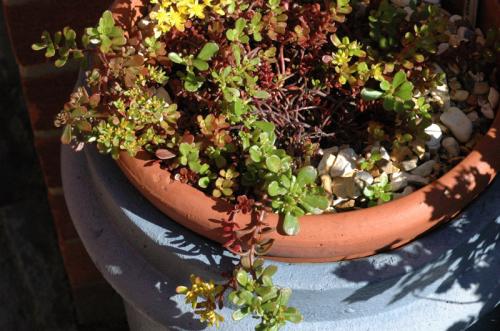
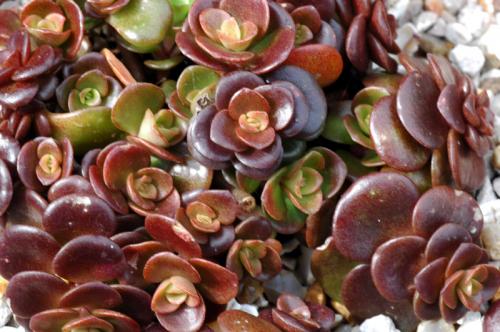
Photos Ray Stephenson
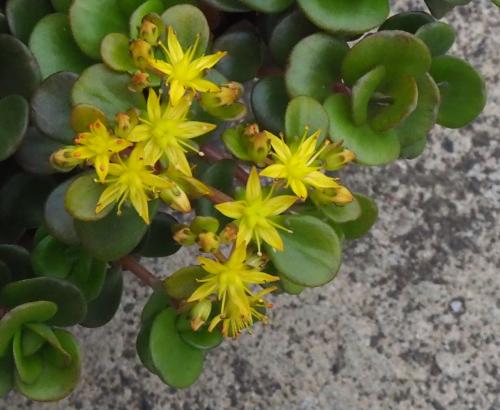
Photo Santino Rischitelli
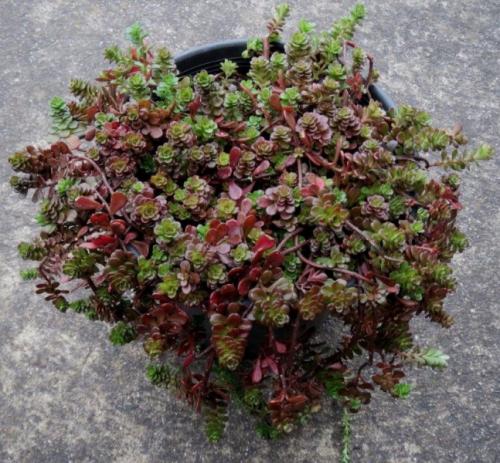
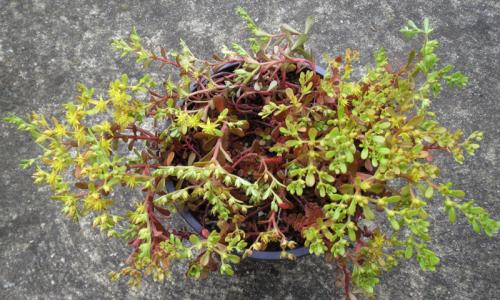
Sedum makinoi 'Ogon :
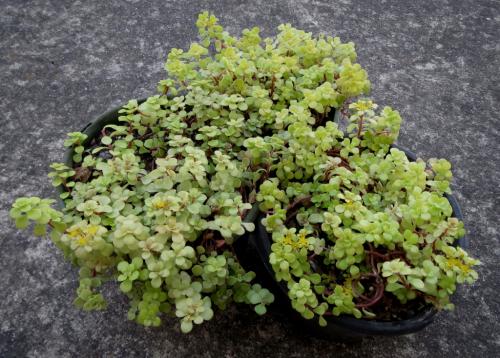
Photos Noelene Tomlinson
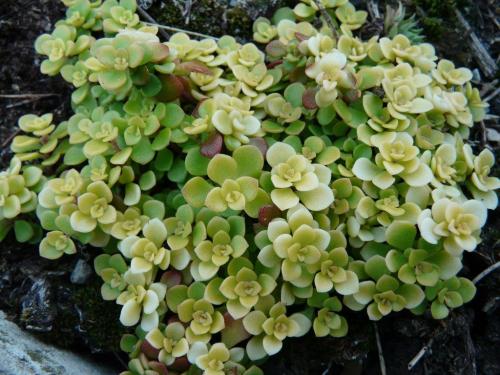
Photo Margrit Bischofberger
S. makinoi ‘Kosmosje’
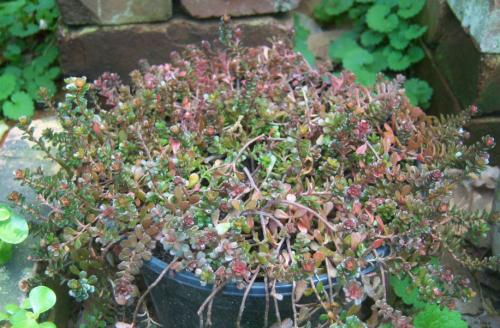
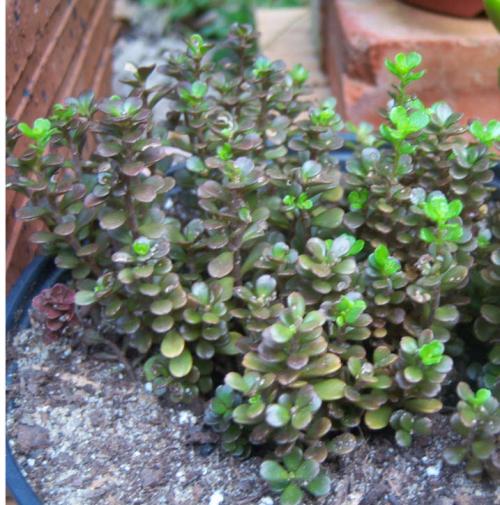
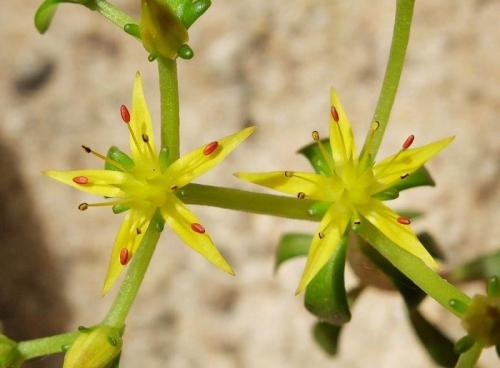
 2.jpg)
Plant Joan Steele, photo Noelene Tomlinson